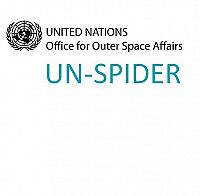›Webinar on space-based inputs for locust early warning and preparedness in South Asia -
⌚ 10:30 CET
On 12 June, United Nations Office for Outer Space Affairs (UNOOSA), through its UN-SPIDER programme, and International Water Management Institute (IWMI) will be hosting a webinar on “Space-based inputs for Locust early warning and preparedness in South Asia” as a commitment to promote the use of space technologies in combating a crisis that is mounting on top of the COVID-19 crisis.
The webinar will take place at 10:30-12.30am Vienna, Austria time (UTC+2). Registrations are open until 11.59pm Vienna, Austria time (UTC+2) on 10 June.
During the 90-minute session, experts from UNOOSA, IWMI, India, Pakistan as well as from other international organisations, governments and private agencies will discuss how space applications can strengthen the monitoring and early warning efforts to prevent the locust outbreak in future.
Background on current locust impact globally
Swarms of desert locusts are threatening large areas of pastures and crops, overwhelming countries in the Horn of Africa, the Middle East, and South Asia. The UN Food and Agriculture Organization (FAO) says these swarms represent the worst infestation in 25 years in Ethiopia and Somalia, in 26 years in India, and the worst in 70 years in Kenya. The crisis has affected 23 countries to date, from Pakistan to Tanzania. This is a single global outbreak, and if it reaches plague levels, it could cover 20 per cent of the earth’s landmass.
Farmers across Pakistan and Indian states are suffering the worst plague of locusts in recent history, which has caused billions of dollars in damage and led to fears of long-term food shortages. The locust crisis overlaps with the COVID-19 pandemic, creating a crisis within a crisis. Local agri-food supply chains are already experiencing disruptions, including reduced access to inputs and services, labour movement, transport and roadblocks, and credit or liquidity due to COVID-19. These crises have the potential to generate a condition of famine, disease and poverty.
Space technology including satellite data offers a handy tool for locust impact monitoring, and early warning. The data are used for assessing the current situation, forecasting its developments and planning an effective response at all levels. Satellite-derived vegetation data and essential climate variables derived from, for example MERRA-2 data of NASA’s Global Modeling and Assimilation Office (GMAO) are used to alert authorities in preventing the spread of desert locust swarms and helps protect the crops of smallholder farmers. The MODIS-derived dynamic greenness map (250 m), as well as the satellite-based rainfall map, can be used by authorities when moving in the field which is implemented using Google Earth Engine. These are some of the examples of adopting innovative technology for use in the locust affected region.
Tweets by spaceagendaTrack this event on your Apple calendar














 Online
Online